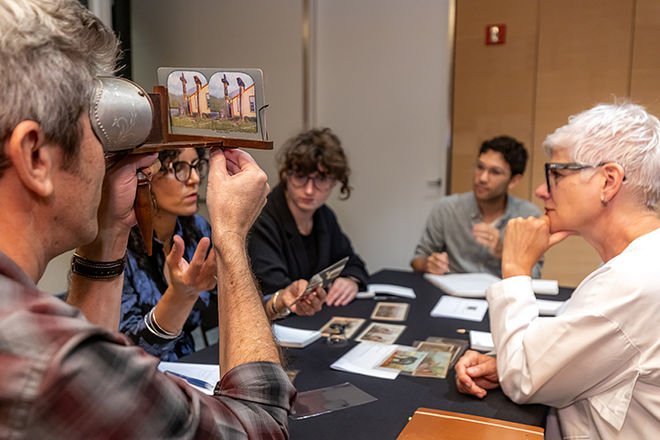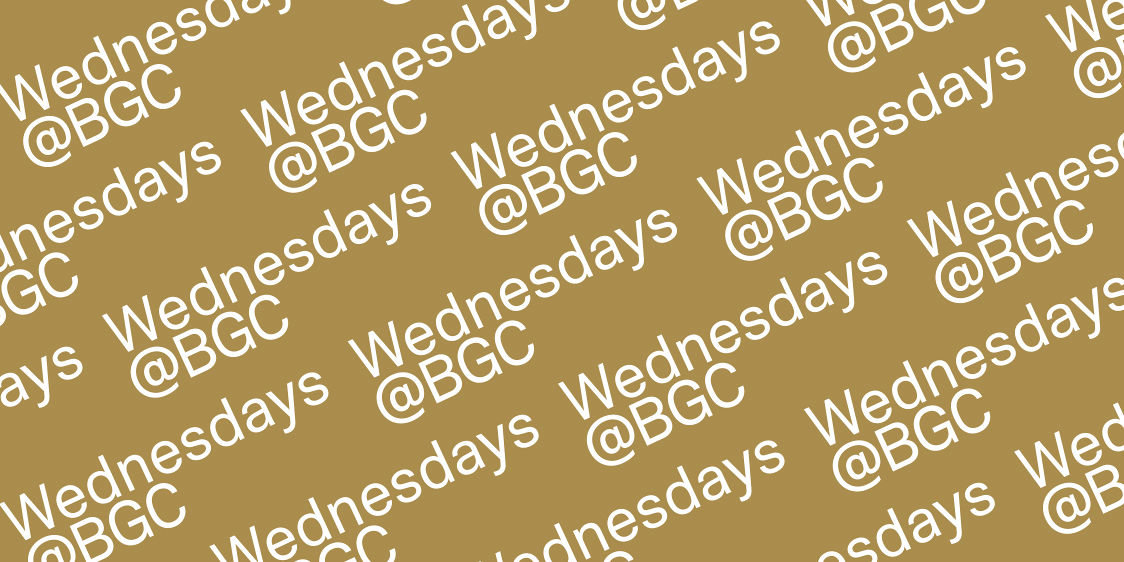Three
days of activities, April 18-20th, 2018 surrounded the Indigenous ontologies
working group in New York City. The Indigenous ontologies working group events
launched the working groups series that is part of “Conserving Active Matter,”
A Cultures of Conservation Research Project which is a collaboration between
Bard Graduate Center, the Humboldt University (Berlin), and the Rijksmuseum
(Amsterdam). Over the next several years four working groups will explore
materials science and new ways of thinking about matter to think about the
future of conservation. The project will culminate in an exhibit in Spring
2020. This post recaps the Indigenous Ontologies working group activities in
April in New York City. Read more information about the other three working
groups, history (fall 2018), materials science (spring 2019), and philosophy
(fall 2019) on the Cultures of Conservation webpage and a recap of our kick-off event in November 2017, and video of the multi-day event.
The Indigenous ontologies working group, led by BGC’s Aaron
Glass, considers the fact that diverse peoples of the world bring their own
cultural values and orientations to the material realm: their own fundamental
notions of what “the object” is and isn’t; what its proper and persistent
relationships to humans and other-than-human beings might be; what protocols
surround its conservation, if indeed it ought to be preserved at all. Thinking
globally, Indigenous ontologies of “Active Matter” explores case studies that
expands western scientific, aesthetic and philosophical paradigms around the
collection, care and exhibition of living cultural heritage – tangible and
otherwise. The working group events began with an evening of public
presentations by invited speakers, on Wednesday, April 18th. The next day,
Thursday, April 19th, the three speakers and BGC Cultures of Conservation
collaborators visited collections at the Metropolitan Museum of Art and
American Museum of Natural History to discuss objects of “Active matter” that
had been selected by the speakers. They were also joined in conversation by
curators, conservators and other staff members at each museum for these
conversations. On Friday afternoon, Thursday’s group reconvened at BGC with
invited conservators, curators, and academics from the NYC area for a workshop
that picked up conversations that began Wednesday, and continued Thursday.
Wednesday evening’s public event began with an introduction to
the “Active Matter” C of C research project and the Indigenous Ontologies
working group by Aaron Glass followed by three invited presentations. All three
of the speakers, Jamie Jacobs, Rose Evans, and Sanchita Balachandran, with
respective specialties in Haudenosaune, Māori, and South Asian material culture,
work in different capacities in cultural institutions with Indigenous material
culture. Video of the evening program, including the introduction and
presentations by all three speakers is available here. Jamie Jacobs is a
Collections Assistant for the Rock Foundation, Rochester Museum and Science
Center. His talk was titled, “The Orator’s Dilema: Wampum as Material, Media,
and Memory”. Rose Evans is a conservator and the Director of the ObjectLab
(Auckland, New Zealand). Her talk was titled, “Making our Past Visible: Toi
Moko and Our Connection with Whakapapa (Genealogy).” Sanchita Balachandran is
the Associate Director, The Johns Hopkins Archaeological Museum, and Senior
Lecturer, Department of Near Eastern Studies, Johns Hopkins University. Her
talk was titled, “The Museum Was Like Heaven, All the Gods Being There:
Approaches to the Preservation of Archaeological-Devotional Objects at the
Madras Government Museum, India, in the Late 19th and Early 20th Centuries”.
Each speaker shared case studies from their experiences of
working with Indigenous material culture that raised issues of western
traditions of conservation, museum practices, and the relationships between
Indigenous peoples and museums. We encourage you to watch the presentations and
discussion on BGC TV.
Following Wednesday evening’s public event, Thursday’s
conversations at the Metropolitan Museum of Art and American Museum of Natural
History allowed us to do deep dives into conversations about individual
Indigenous objects, their materials, meanings, the history of conservation
practices in cultural institutions and Indigenous perspectives on the treatment
of these objects. With the background provided by Wednesday evening’s
presentations, this resulted in more fruitful conversations and highlighted
parallel and distinct differences amongst these Indigenous traditions
conceptions of conservation treatment, collection, and practices.
Friday’s workshop which included around twenty-five
conservators, curators, and academics from the NYC area who specialize in
Indigenous material culture broadened our conversation to include Indigenous
peoples and their relationship to material culture outside of the Haudenosaune,
Māori, and South Asian traditions. The session culminated with conversations
surrounding the presentation of Indigenous ontologies in the “Active Matter”
Cultures of Conservation exhibit, including exhibit themes, potential object
selections and the future of the “working group” over the next few years. We
are immensely grateful to all of our participants over the three days of
activities and look forward to the next “Active Matter” working group series in
the fall.












